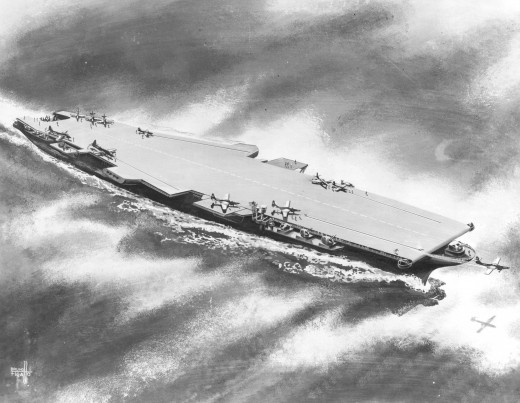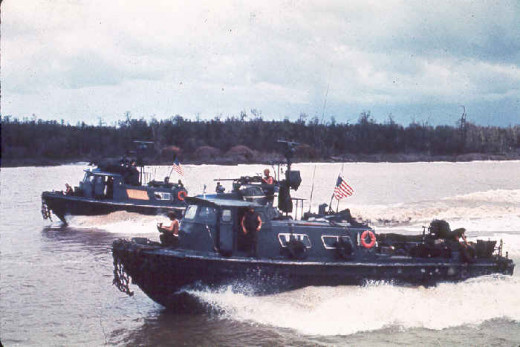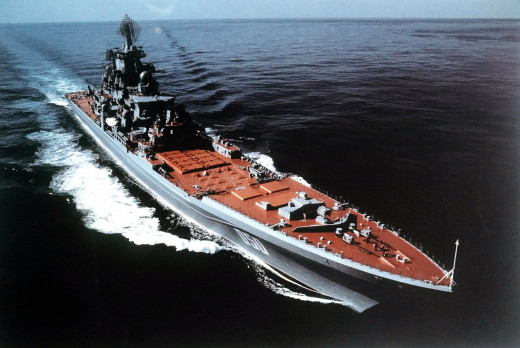Power at Sea: A Violent Peace, 1946-2006 Review

A Violent Peace: 1946-2006 is the third and final book in Lisle A. Rose's Power at Sea Series. Covering the Cold War and the immediate post-war era with the US interventions in the 90s and the beginning of the War on Terror, this general history is a decided step up from the first books in the series, and serves as a good social, operational, and organizational history of the US navy during the period, even if it tends to neglect most other navies save the Soviet fleet, and misses some key US technological developments that should have been dealt with at greater length. It makes for a good general purpose book that gives a feel for the development of navies and their role - at least concerning surface forces - in the later 20th century.

Like other books in the series, A Violent Peace begins with its preface - purely devoted to the American navy and its travails and development throughout the late 20th century - and then a collection of maps, which par normal are rather unimpressive and basic regional maps. After this the first chapter is about grand strategy - covering the intense battle between the navy and the army and emergent air force for post-war control of military spending and priorities, with the "Revolt of the Admirals" against plans to massively downscale the navy in favor of the air force. Ultimately the navy was able to carve out a new role for providing fast deployable power to hot zones and engaging in nuclear strikes on the periphery of the Soviet Union.
The second chapter is about this nuclear strategy but also the modernization of the fleet - its carriers, the development of nuclear submarine technology, and surface warships.
Chapter 3 is about American fleets in peace-time, with the Sixth Fleet in the Mediterranean and the Seventh Fleet in East Asia. The Sixth Fleet during the early Cold War intervened in the Suez to protect American lives from the Anglo-French-Israeli intervention, nearly coming to blows with its ostensible allies, while the Seventh Fleet served to prevent a Communist invasion of Taiwan, being regularly involved in Taiwan straits crises.

Chapter 6 is about both Vietnam and Korea, and the possibilities and limitations of seapower - the navy providing vital logistics, transport, and air support for interdiction and attack in Korea, but being unable to decisively break the enemy, while in Vietnam American riverine patrol units - from both the navy and the coastguard - fought pitched battles with Communist enemies, while their carrier comrades were constantly engaged in providing air support off the coast, at constant stress and exertion. In both wars a heavy toll, in casualties, stress, wear, worry, fear, and difficult climate conditions, was placed upon the sailors of the fleets.
A bright spot of US success was the Cuba blockade, covered in chapter 6 and lauding the decisive superiority of the US navy which enabled Cuba to be cut off, blockaded, and a US victory in the Cuban missile crisis secured.

The Soviet Feet would grow in response to this, the subject of chapter 6, which paints a mixed image of the new Soviet navy - at once with significant maintenance, reliability, quality, training, and technical problems, but also highly modern, ferociously armed, which advanced rapidly and by the 70s seemed on the verge of surpassing the US navy.
Chapter 7 is then devoted to the revival of the US fleet and the retreat of the Soviet navy, as the Americans began to rebuild their fleet in a naval expansion under Reagan, adopting offensive new wartime strategies to face the Soviet Union, and integrating new technology - while the Soviet Union retreated to a more defensive stance. But the Soviet Union's collapse soon obsoleted this all, and the US navy - and other navies like the Royal Navy whose Falkland war is covered briefly - shifted to respond to small scale conflicts and intervention in less developed countries, or supporting against enemies like Iraq - with the navy playing a decidedly subordinate role in the Gulf War.
Chapter 8 looks at the social problems of the US navy, as it dealt with sexism, racism, and internal discord in the major social transformations which gripped the United States over the second half of the 20th century, causing racial conflicts within the fleet and issues of sexism against female members of the fleet.

The final chapter, Chapter 9, is about the US navy's involvement in the Yugoslav and then Second Iraq War, followed by global actions in the war against terror following 9/11. Rose lauds the continued importance of the US navy and the courage and devotion of its sailors, despite its woes and cost cutting, the 20th century being a century of honorable service and one which it defined.
It seems to be a trend that in Lisle. Rose's Power at Sea series, every book is better than the last. This is normally used in an extremely complimentary tone - they start off great, and they only get better! It isn't quite the same in Rose's work, since the first book in his series - The Age of Navalism - is quite mediocre, even rather bad. The Breaking Storm is decent, and finally in A Violent Peace does he reach a level which can be referred to as good.
There are a variety of reasons for this improvement. The technical errors of his first book are gone, and the second one's wild over-reaching and poorly thought out scenarios don't feature in the third. The influence of seapower is better balanced: Rose continues to stress its necessity, but there is no equivalent to the dramatic over-evaluations that he has had in previous books about the political impact and possibility for power projection that naval forces possess.
It is a peeve which I have mentioned rather often before, but Rose does focus heavily on the US, to excess. Most events are written from the viewpoint of the Americans, and they receive outsized attention. The most recent and major naval conflict between peer powers, the Falkland war, receives a scant few pages, heavily critical of the British - although they at least receive some focus, while the Argentinians get next to nothing. Even relatively minor American naval conflicts, like operations in the Taiwan Straits, are far longer. Outside of the American navy, the Russian navy, and very intermittently the Royal Navy, nobody else receives mention - nothing about the French fleet and its revival from the war, nor various smaller navies.
Furthermore the book is focused above all else on above-water elements of naval power, with carrier fleets and surface ships. There is very little about submarines, other than a few pages about the development of the nuclear submarine fleet in the US, when much more could have been to cover this vital part of modern sea power - the nuclear missile submarine deterrent, which every major nuclear-armed naval power has as a backbone of its defense. The introduction of new technology and doctrine is covered in a scattered way: new defensive technology and planning in the 1950s which dramatically restructured the way that American carrier battle groups operated, the influence of precision weapons in the 1990s, the ability of carriers to function as strategic strike arms with their nuclear weapons - but more could have been covered about important subjects such as intelligence gathering, missile defense, the evolution of the carrier air wings, submarine usage, amphibious invasion doctrine, and other subjects. At his heart, Rose is most interested in the personnel, moral, and "soft" side of seapower and less in its hard aspects, and this shows.
At the least however, and unlike in previous books, Rose focuses on aspects of naval warfare that are little known to the general public. Perhaps this is due to his own personal history, since as he mentions he was a sailor in East Asia in the 1950s, but the Taiwan Straits crisis - even if it may be odd that it receives so much focus while actual shooting wars like the Falklands receive hardly anything - is a good example of covering something beyond the humdrum affairs of the Battle of the Atlantic, Jutland, the Pacific War, etc.
Furthermore, while a difficult subject to cover, Rose does pay attention to the social transformations which happened in the American navy - and to some extent in the Russian navy too, although even more pessimistically in regards to the Red Fleet and its internal ethnic divisions. It is hard to chart such a development of course, since it is touchy and has different interpretations, but Rose treats it generally impartially and fairly, from a progressive standpoint about the importance of racial and sexual integration and fairness in the navy, while not glossing over the internal squabbles and tensions.
Certainly, Rose's book isn't a masterpiece, but in its final history it arrives at providing a good general history of the United States navy at least, and to some extent its Soviet opponent. It could have used a much broader perspective and greater technical and operational details, but in its basic composition, it makes for a sound volume - one that can be used to form a base for a broader and deeper understanding of naval history in the second half of the 20th century.
© 2020 Ryan C Thomas








